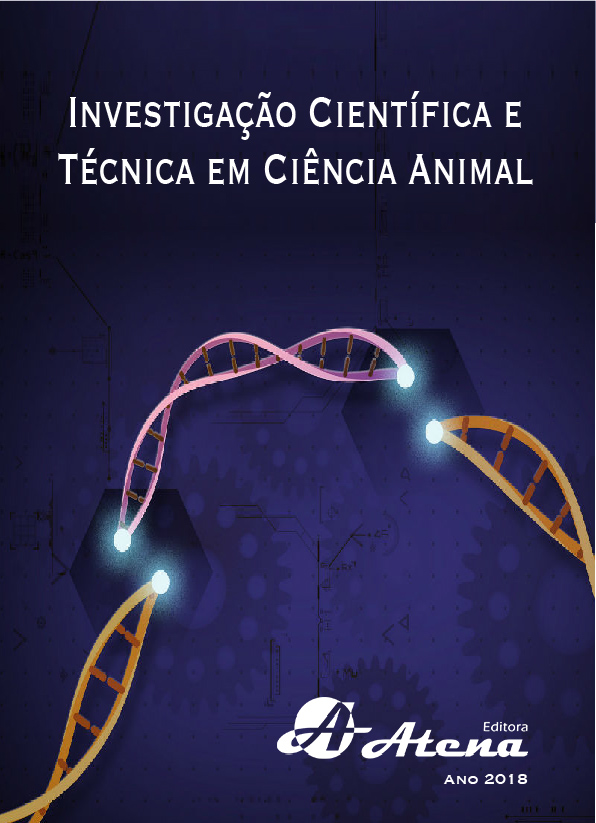
EFICIÊNCIA DA APLICAÇÃO DO QUESTIONÁRIO DA SITUAÇÃO DA PESTE SUÍNA CLÁSSICA, EM TERMOS DE RISCO, POR MUNICÍPIO EM SANTA CATARINA
A Peste Suína Clássica é uma
enfermidade de notificação obrigatória para a
Organização Mundial da Saúde Animal (OIE),
sendo o Estado Santa Catarina reconhecido como
livre desta doença pela OIE. O presente trabalho
teve como objetivo analisar a abrangência e o
alcance da aplicação do questionário remetido
aos médicos veterinários do SVO responsáveis
pelos 295 municípios de Santa Catarina, divididos
em dezenove regiões, bem como descrever
os riscos relacionados à vulnerabilidade e
à receptividade destes municípios para as
Síndromes Hemorrágicas e as ações preventivas
executadas. Foram comparadas as respostas
de dezenove regiões, sendo que as regiões
representaram os tratamentos e as repetições
foram as respostas coletadas por município.
Os dados foram submetidos à análise não
paramétrica de Kruskall Wallis. Foram descritas
algumas vulnerabilidades existentes nas
diferentes regiões, e ficou evidenciado que
33,33% dos municípios possuem implantação do
plano de ação preventivo. Em 83% dos municípios
não houve atendimento a notificações de
suspeitas motivadas pelo aumento nos índices de
mortalidade conforme critério estabelecido pela
Norma Interna MAPA nº 05/2009. A região de
Concórdia demonstrou receptividade baixa devido
ao fato de que em 92% dos municípios o ingresso
animais é com utilização de GTA; em 71,43% dos
municípios a produção é tecnificada e integrada
e à rapidez no atendimento à notificação de
suspeita de enfermidades confundíveis com PSC.
Logo, a aplicação do questionário foi eficiente pois
abrangeu as 19 regiões analisadas e permitiu
identificar as vulnerabilidades e sucessos na
prevenção da reintrodução da Peste Suína
Clássica em Santa
Catarina.
EFICIÊNCIA DA APLICAÇÃO DO QUESTIONÁRIO DA SITUAÇÃO DA PESTE SUÍNA CLÁSSICA, EM TERMOS DE RISCO, POR MUNICÍPIO EM SANTA CATARINA
-
DOI: Atena
-
Palavras-chave: controle sanitário, enfermidade, Pestivirus, suinocultura.
-
Keywords: sanitary control, disease, Pestivirus, swine farming
-
Abstract:
Classical Swine Fever is a notifiable
disease to the World Organisation for Animal
Health (OIE)and Santa Catarina Brazilian State is
a free zone recognized by OIE. The objective of this
work was to analyze the comprehensiveness and
the scopeof the application of the questionnaire
sent to the veterinarians from the SVOthat are
responsible for the 295 municipalities of Santa
Catarina, wich were divided in nineteen regions.
Still, to describe the risksrelated to the vulnerability
and the receptivity of those municipalities for
the Hemorrhagic syndromes and describe the
preventive actionsperformed. The answerswere comparedbetween the regions, where
regions represented the treatments and the repetitions were the answers collected by
municipality. The data were submitted toKruskall Wallis non-parametric analysis. It were
described some vulnerabilities observed in the different regions and it was evidenced
that 33,33% of the municipalities have the preventive plan implemented. In 83% of the
municipalities there wasn’t any attendance of suspicions motivated by the increasing on the
mortalityas set out in the Internal Normative nº 05/2009 from MAPA. The Concordia region
demonstrated low receptivity due to the fact that in 92% of its municipalities the entrance
of animals occurs through the issuance of GTA; besides, in 71,43% of the municipalities
the production is technified and performedin the integrated mode and also due to the rapid
response to the notifications of suspicion of diseases that can be confounded with PSC.
Therefore, the application of the questionnaire was efficient, since it covered answers from
all 19 regions analyzed and allowed to identify vulnerabilities and successes in prevention
of reintroduction of Classical Swine Fever in Santa Catarina.
-
Número de páginas: 15
- Amanda Costa Xavier


